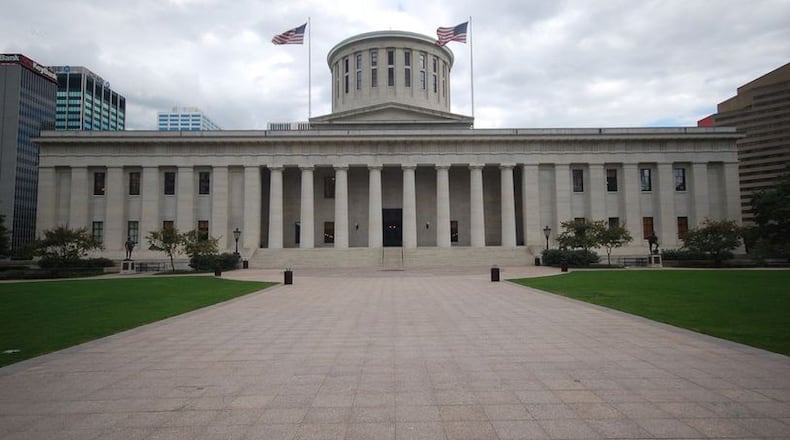House and Senate committees have held hours of hearings on map proposals from Democrats and Republicans, filed as formal bills.
Senate Democrats submitted their map proposal on Sept. 29, but in earlier Senate committee hearings Republicans questioned whether that map violated a requirement of equal population in each district. Evenly splitting Ohio’s population between 15 districts, as determined by the 2020 census, would put 786,630 in each district. The original Senate Democratic map was off by several hundred in some districts.
So the map’s sponsors, state Sens. Kenny Yuko, D-Richmond Heights, and Vernon Sykes, D-Akron, presented a substitute map Wednesday. Sykes, a member of the joint committee, said the map was revised to respond to Republican concerns about equal population.
In the new map, 13 districts would have exactly 786,630 people each, while two districts would each have 786,629, he said.
The map would create eight Republican-leaning districts and seven Democrat-leaning districts, Sykes said. Republicans hold 12 of Ohio’s 16 current U.S. House seats.
“Our proposal today demonstrates that fairness is not in conflict with the principle of equal population,” he said.
State Sen. Theresa Gavarone, R-Bowling Green, co-chair of the six-member joint redistricting committee, said the new proposal had only four districts that could be called competitive.
Randall Routt, Senate Democratic staffer, said two of those districts are within a 48%-52% partisan split, and one of the four districts leans Republican; in Republican-proposed maps, all “competitive” districts are Republican-leaning.
Republican members also disputed Senate Democrats’ choice of data to determine partisan breakdown, and the shape of several proposed districts.
Democrats are open to suggested changes, Routt said.
State legislators have until Nov. 30 to approve new districts. If they can craft a map that garners a three-fifths overall majority and support from one-third of Democrats, it will be valid for a decade. If not, they can accept a map by simple majority vote without bipartisan support, but it would have to be redone in four years.
Jen Miller, executive director of the Ohio League of Women Voters, and Catherine Turcer, executive director of Common Cause Ohio, spoke on behalf of the Fair Districts Ohio coalition.
Miller said an analysis by Fair Districts Ohio showed the originally proposed Senate Democratic map scored highest on various measures, including district compactness and competitiveness.
Turcer said the general difference between Democratic and Republican maps lay in minority representation. Each official map proposal has one majority-minority district, but Democratic maps would create two “opportunity districts” in Hamilton and Franklin counties, where minority candidates would have a good chance, she said.
The committee adjourned after less than two hours. It’s scheduled to meet again at 10:30 a.m. Friday, but it remains unclear whether the joint committee will recommend adoption of a specific map or if that task will revert to the General Assembly as a whole.
The six-member joint committee includes four Republicans and two Democrats. It’s chaired by Gavarone and Rep. Shane Wilkin, R-Hillsboro.
Other members are Senate Majority Whip Rob McColley, R-Napoleon, sponsor of the Senate Republican map; Rep. Scott Oelslager, R-Canton, sponsor of the House Republican map; Sykes, former co-chair of the Ohio Redistricting Commission and a co-sponsor of the Senate Democratic map; and Rep. Beth Liston, D-Dublin.
Districts are commonly deemed “competitive” if they have a partisan split no greater than 55% to 45%. Using that standard, the Senate Republican proposal would likely create five Republican, two Democratic and eight potentially competitive districts.
The House Republican proposal would create eight Republican districts, two Democratic, and five up for grabs, again using the 55%/44% standard for competitiveness.
The House Democratic map would create six Republican, four Democratic and five competitive districts.
About the Author

